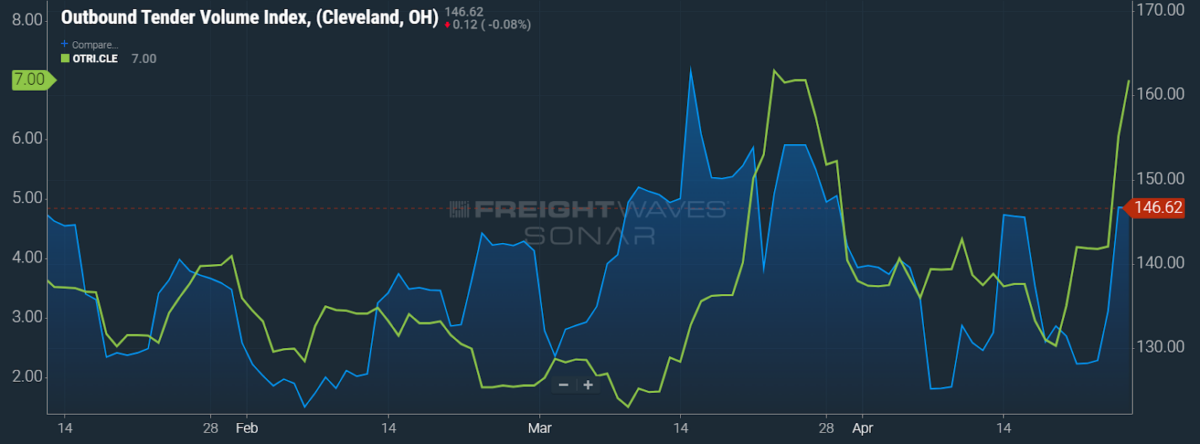
Welcome to Check Call, our corner of the internet for all things 3PL, freight broker and supply chain. Check Call the podcast comes out every Tuesday at 12:30 p.m. EDT. Catch up on previous episodes here. If this was forwarded to you, sign up for Check Call the newsletter here.
Inside this edition: Gen Zers enter the workforce knowing their worth and not settling for less, Mexico continues to boom, and California comes up with another rule about trucks.

Graduation season is upon us. The month of May claims everyone’s weekends for endless graduation-related activities. Now that there is some fresh meat in the talent pool, it’s time to snatch up the prime cuts before everyone else does. Things are different now. Gen Zers are entering the workplace, and they operate on a slightly different set of rules and have an entirely different approach to work.
Gen Z comprises those born between 1997-2002 and total about 67 million people, roughly 20% of the U.S. population, according to Statista. Given that the supply chain is having a massive staffing problem, it’s more important than ever to capitalize on the next generation of talent.
What an ideal job looks like for Gen Zers:
- It pays salaries well above minimum wage. Gen Zers know their worth and won’t settle for anything less. Seventy percent of Gen Zers surveyed by Handshake said that pay is the most important factor in a potential job. Gone are the days of chronically underpaying people. To retain young talent, the compensation has to be there or they won’t be.
- If offers career development. The same survey found that 71% expect to be promoted within six to 18 months. If the organization prides itself on flat hierarchies and promotions aren’t in the plan, then opt for upskilling and reskilling. Establishing a continuing education track is key.
- It prioritizes those pesky benefits. Gone are the days of just saying, “Here’s some health insurance. Have a nice day.” Seventy-five percent of respondents in the Handshake survey said that health care is the most important benefit, with mental health coverage being a priority. The benefit right behind health care is a flexible schedule. Four-day workweeks, the ability to flex time throughout the day and control over their own schedules are going to become normal expectations.
While most of these changes can’t happen overnight, it’s crucial to start looking at how current benefits packages stack up against those of leaders in the industry. Those who aren’t having as hard a problem recruiting and retaining talent might be on to something. Gen Z is here and has some strong opinions that will not be quieted.

Speaking of retaining and attracting talent, let’s head south of the border. Joining in the growth happening in Mexico are 3PLs and other logistics service providers — most recently, Redwood Logistics and BlueGrace logistics. These two companies have announced expansions of their Mexico operations in an effort to keep up with demand from shippers.
Having a presence in Mexico, Texas and Arizona will almost be a requirement for the next few years. Arizona has become a hotbed for semiconductor manufacturing. Taiwan Semiconductor Manufacturing Co. just invested $40 billion to open a new plant in Arizona. Central Texas and Arizona are about a seven-hour drive from Monterrey, Mexico. That’s infinitely shorter than two weeks on the ocean. These developments in Mexico could alleviate a lot of strain on supply chains.

Market Check. Outbound tender rejections in Cleveland have shot up with an increase of 447 basis points week over week, making capacity a little constrained in the market. Volumes in Cleveland have leveled off after taking a steep increase at the beginning of the week. Outbound tender volumes were yo-yoing throughout the past month, making the market slightly more volatile than others. The increase in rejections will bring elevated spot rates. As rejections are right at 7%, Cleveland might be the one market that has spot rates higher than contract rates at the moment.

Who’s with whom? California makes headlines again. This time it’s the new Advanced Clean Fleets rule. The rule is part of the California Air Resources Board’s overall approach to accelerate a large-scale transition to zero-emission medium- and heavy-duty vehicles. This rule is working in tandem with the Advanced Clean Trucks regulation, which encourages zero-emission vehicles being brought to market.
No major changes are happening overnight. Existing trucks will be able to run until the earlier of 18 years or 800,000 miles or a minimum of 13 years if the truck has over 800,000 miles. A potential problem with the rule is the lack of infrastructure. From electric charging stations to hydrogen fuel, the infrastructure isn’t 100% ready for all the medium- and heavy-duty vehicles in the state to fuel up. CARB seems to be confident this will not be an issue, based on the output of existing infrastructure as well as forthcoming investments.
The more you know
Union organizer to railroads: ‘It doesn’t have to be this way’
DOT issues final rule on oral fluid drug testing
Bankrupt Bed Bath & Beyond goes after container shipping lines
FedEx Freight to close 29 service centers
Judge allows Convoy’s monopoly complaints against DAT to proceed








